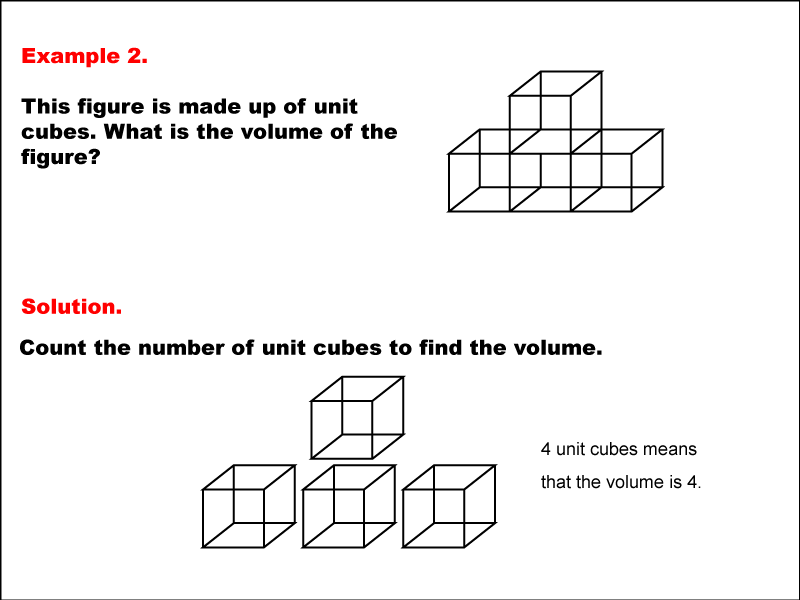
Display Title
Math Example--Volume Concepts--Modeling Volume--Example 2
Display Title
Math Example--Volume Concepts--Modeling Volume--Example 2

Topic
Volume
Description
The image shows a figure made up of 4 unit cubes, with one cube stacked on top of another, forming an L-shape. The example asks for the volume, and the solution involves counting the cubes. Example 2: The figure consists of 4 unit cubes. The caption reads: "Count the number of unit cubes to find the volume. 4 unit cubes means that the volume is 4."
In general, understanding volume involves recognizing how space is filled within a three-dimensional object. This collection of examples demonstrates how different volumes can be modeled using unit cubes, allowing students to visualize and count volume units for rectangular prisms and other 3D shapes. Such visual models reinforce the concept of volume by helping students build spatial reasoning and connect abstract measurements to real shapes.
Seeing multiple worked-out examples is critical for students to understand the concept fully. When students observe a range of shapes and volumes, they gain insight into how volume calculations vary and become more comfortable tackling similar problems on their own.
Teacher’s Script: Let's look at this example together. Notice how the unit cubes are used to fill the shape, helping us see how volume is calculated. How would you describe the volume of this shape? Can you count the unit cubes?
For a complete collection of math examples related to Volume, click on this link: Math Examples: Modeling Volume Collection.
| Common Core Standards | CCSS.MATH.CONTENT.5.MD.C.4, CCSS.MATH.CONTENT.6.G.A.2, CCSS.MATH.CONTENT.5.MD.C.3.A |
|---|---|
| Grade Range | 4 - 6 |
| Curriculum Nodes |
Geometry • Surface Area and Volume • Volume |
| Copyright Year | 2020 |
| Keywords | volume |